Abstract
A variety of elution schemes was tested to determine the most effective procedure for eluting Arthrobacter bacteriophages from soil. A buffer solution of pH 8.0 was found to be the most satisfactory eluent. Bacteriophages were adsorbed to cation-exchange sites on soils, clays, and Dowex-50 resin and eluted. Eluted bacteriophages were detected by passive hemagglutination and plaque assay. Although bacteriophage antigen was successfully eluted, most recovered bacteriophages were noninfective. Inactivation was greatest in bacteriophages of Bradley group B and was associated with the elution process. Inactivation is believed to be caused by physical damage to bacteriophage tails upon elution. The significance of this inactivation relative to bacteriophage models for vertebrate viruses is discussed.
Full text
PDF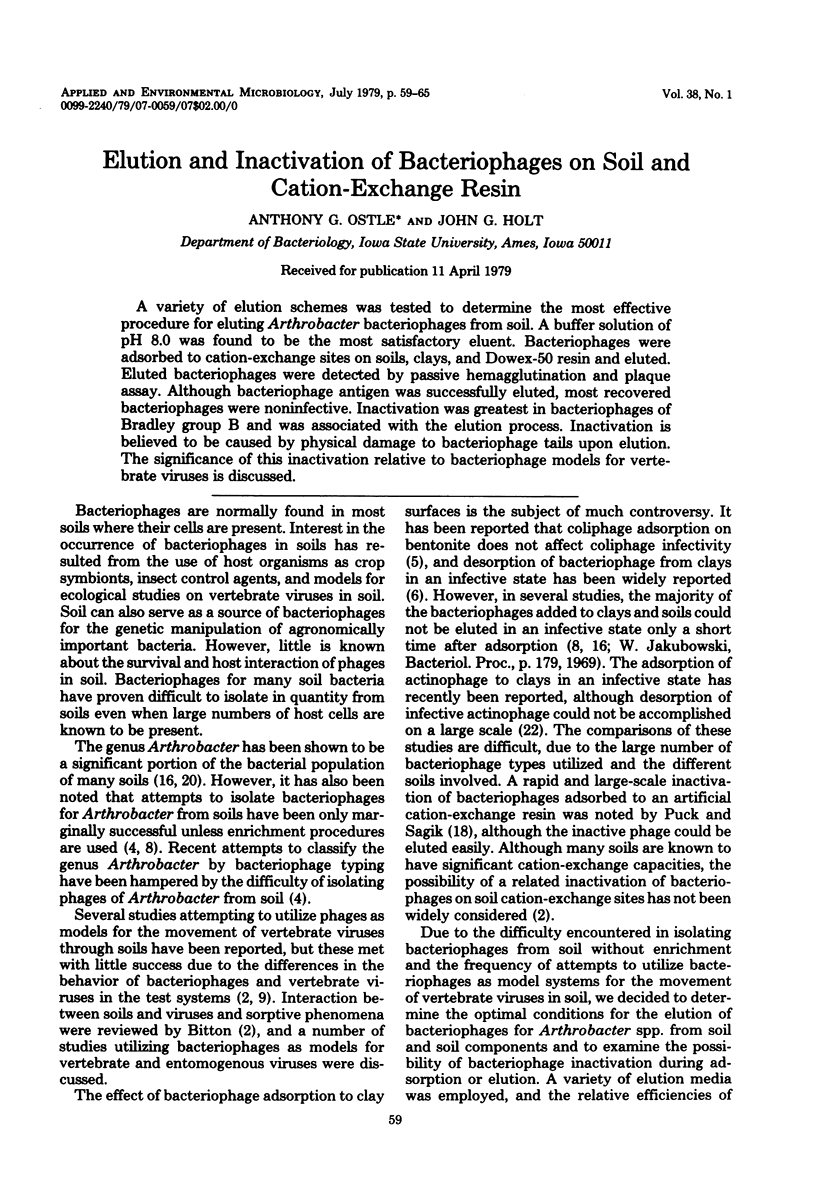
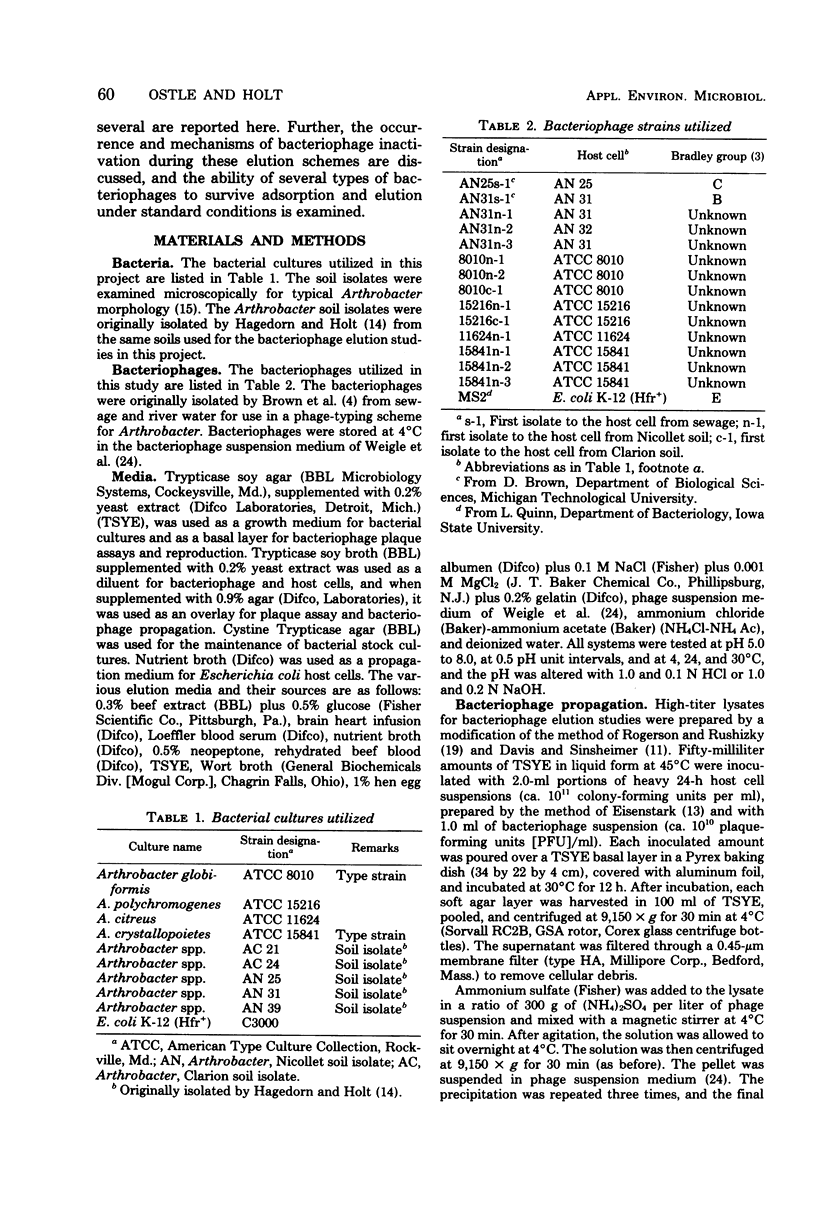
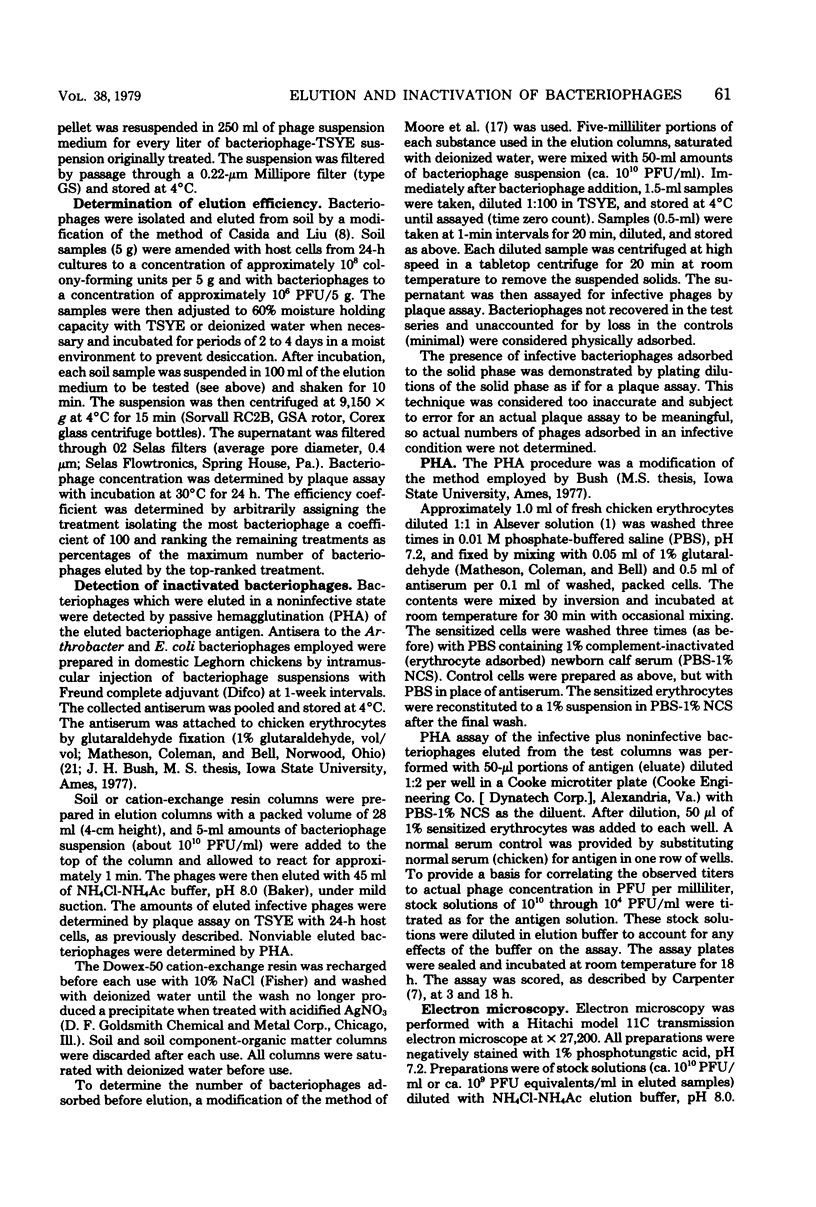
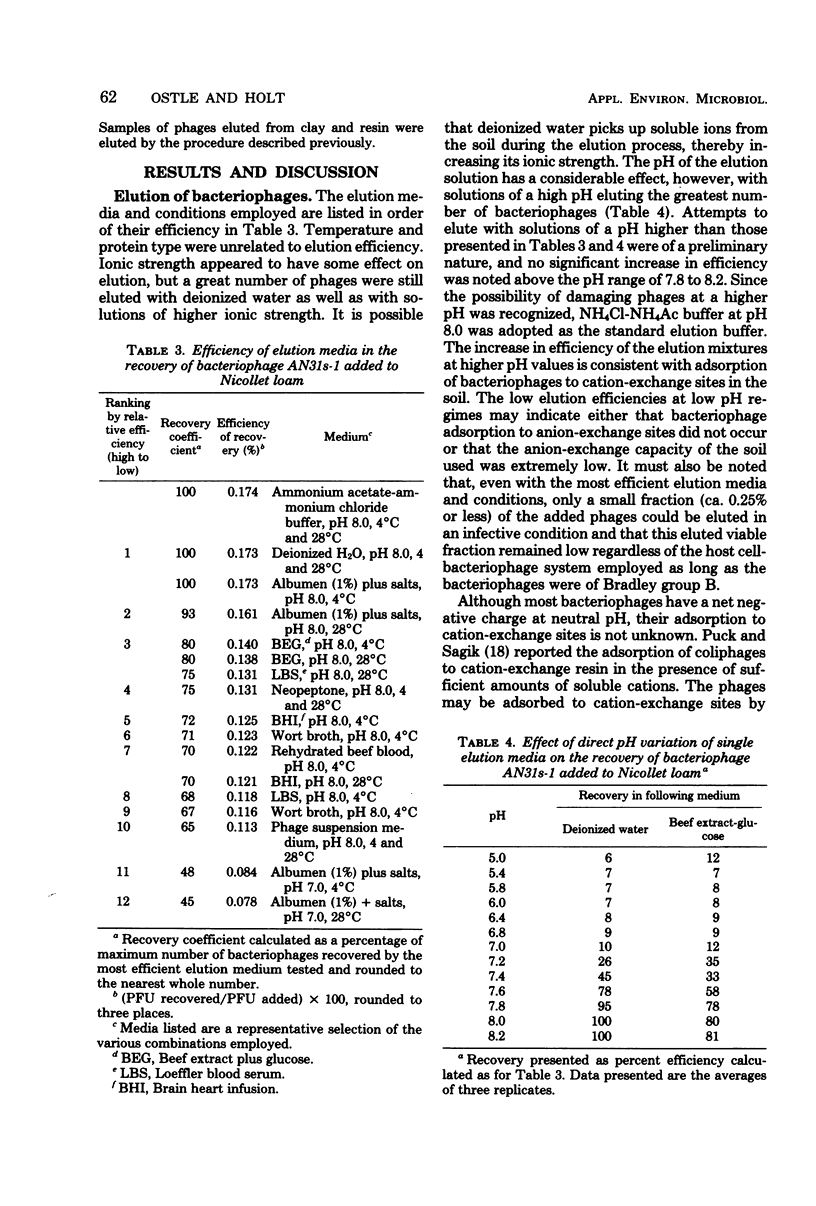
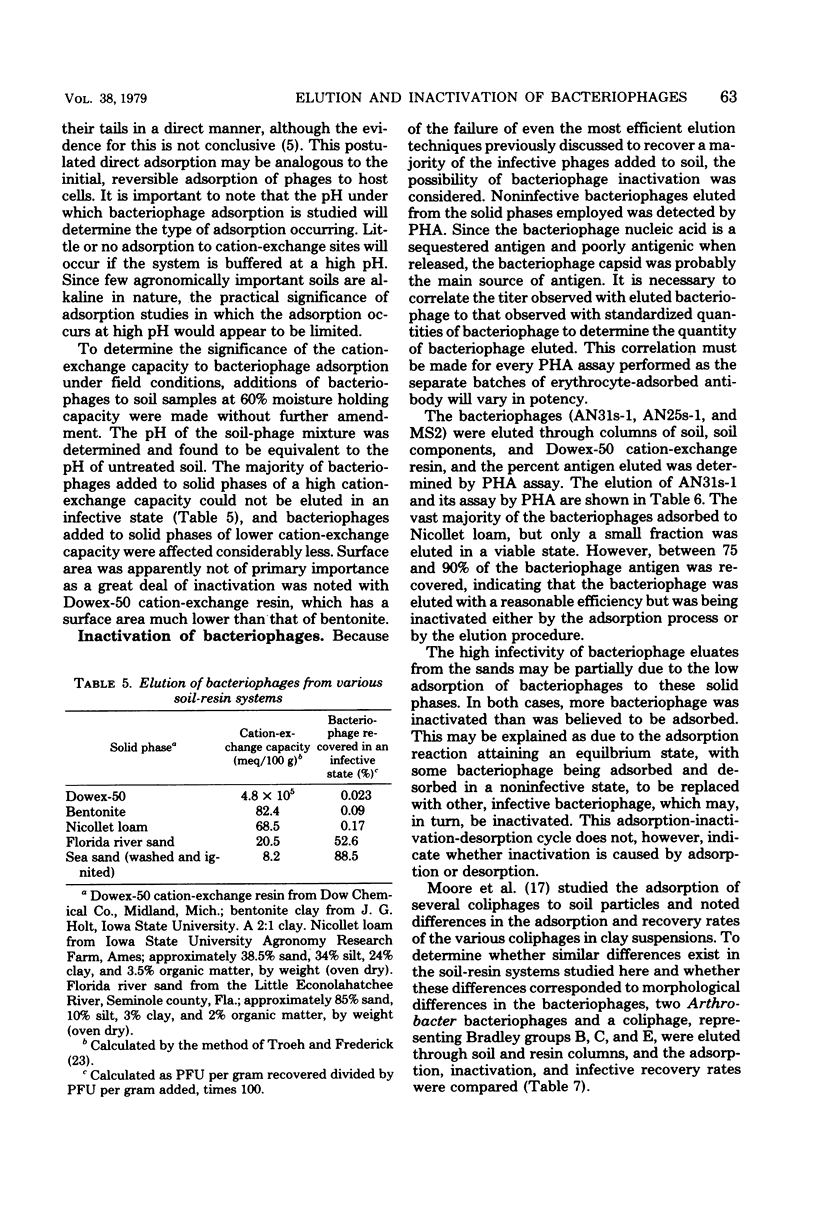
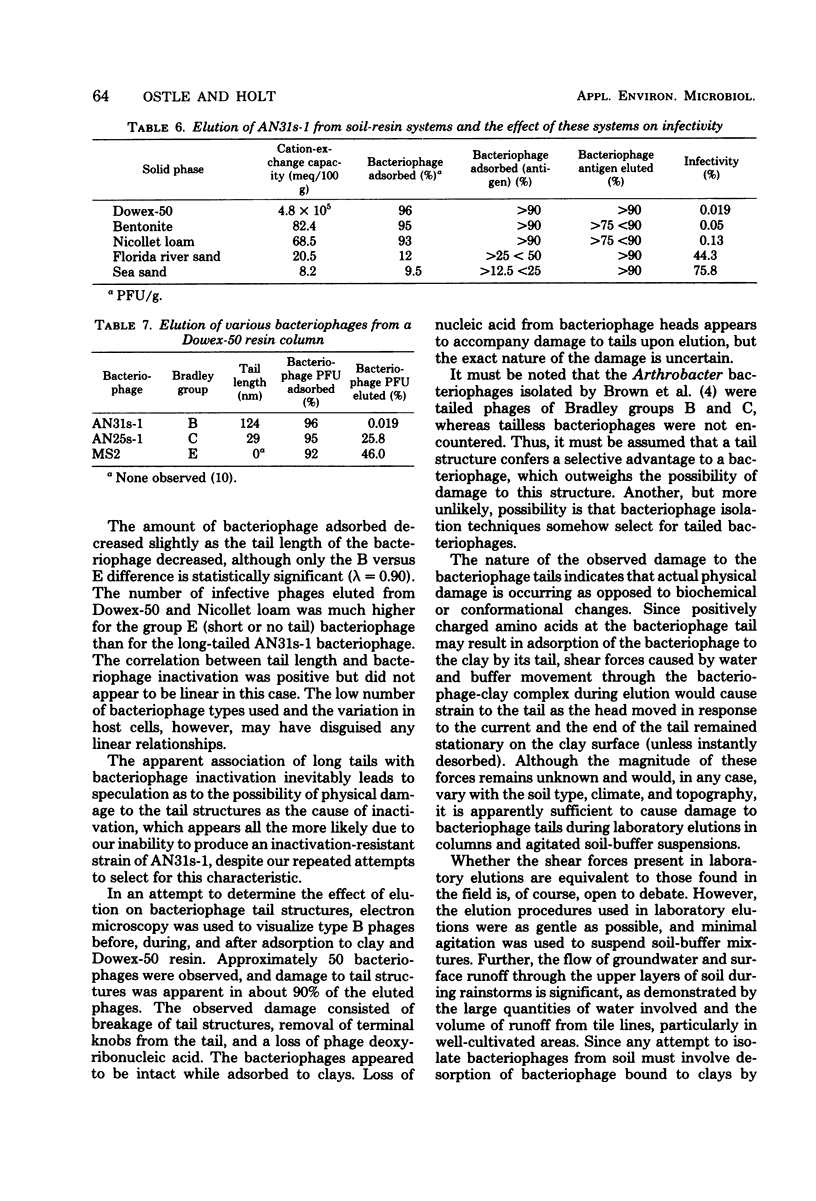
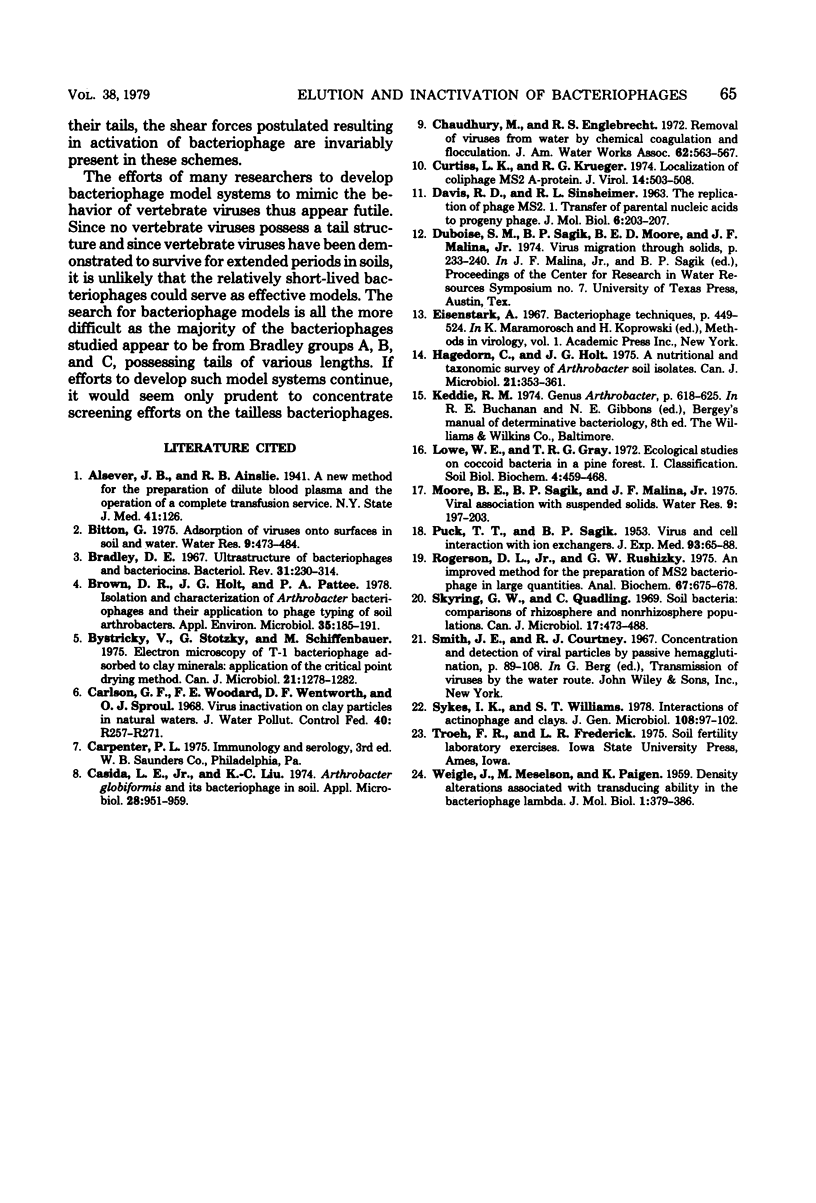
Selected References
These references are in PubMed. This may not be the complete list of references from this article.
- Bradley D. E. Ultrastructure of bacteriophage and bacteriocins. Bacteriol Rev. 1967 Dec;31(4):230–314. doi: 10.1128/br.31.4.230-314.1967. [DOI] [PMC free article] [PubMed] [Google Scholar]
- Brown D. R., Holt J. G., Pattee P. A. Isolation and characterization of Arthrobacter bacteriophages and their application to phage typing of soil arthrobacters. Appl Environ Microbiol. 1978 Jan;35(1):185–191. doi: 10.1128/aem.35.1.185-191.1978. [DOI] [PMC free article] [PubMed] [Google Scholar]
- Bystricky V., Stotzky G., Schiffenbauer M. Electron microscopy of T1-bacteriophage adsorbed to clay minerals: application of the critical point drying method. Can J Microbiol. 1975 Aug;21(8):1278–1282. doi: 10.1139/m75-192. [DOI] [PubMed] [Google Scholar]
- Casida L. E., Liu K. C. Arthrobacter globiformis and Its Bacteriophage in Soil. Appl Microbiol. 1974 Dec;28(6):951–959. doi: 10.1128/am.28.6.951-959.1974. [DOI] [PMC free article] [PubMed] [Google Scholar]
- Curtiss L. K., Krueger R. G. Localization of coliphage MS2 A-protein. J Virol. 1974 Sep;14(3):503–508. doi: 10.1128/jvi.14.3.503-508.1974. [DOI] [PMC free article] [PubMed] [Google Scholar]
- DAVIS J. E., SINSHEIMER R. L. The replication of bacteriophage MS2. 1. Transfer of parental nucleic acid to progeny phage. J Mol Biol. 1963 Mar;6:203–207. doi: 10.1016/s0022-2836(63)80069-8. [DOI] [PubMed] [Google Scholar]
- Hagedorn C., Holt J. G. A nutritional and taxonomic survey of Arthrobacter soil isolates. Can J Microbiol. 1975 Mar;21(3):353–361. doi: 10.1139/m75-050. [DOI] [PubMed] [Google Scholar]
- Keddie N. C., Taylor A. W., Sykes P. A. The termination of the common bile duct. Br J Surg. 1974 Aug;61(8):623–625. doi: 10.1002/bjs.1800610808. [DOI] [PubMed] [Google Scholar]
- PUCK T. T., GAREN A., CLINE J. The mechanism of virus attachment to host cells. I. The role of ions in the primary reaction. J Exp Med. 1951 Jan;93(1):65–88. doi: 10.1084/jem.93.1.65. [DOI] [PMC free article] [PubMed] [Google Scholar]
- Rogerson D. L., Jr, Rushizky G. W. An improved method for the preparation of MS2 bacteriophage in large quantities. Anal Biochem. 1975 Aug;67(2):675–678. doi: 10.1016/0003-2697(75)90345-0. [DOI] [PubMed] [Google Scholar]
- Skyring G. W., Quadling C. Soil bacteria: comparisons of rhizosphere and nonrhizosphere populations. Can J Microbiol. 1969 May;15(5):473–488. doi: 10.1139/m69-083. [DOI] [PubMed] [Google Scholar]


